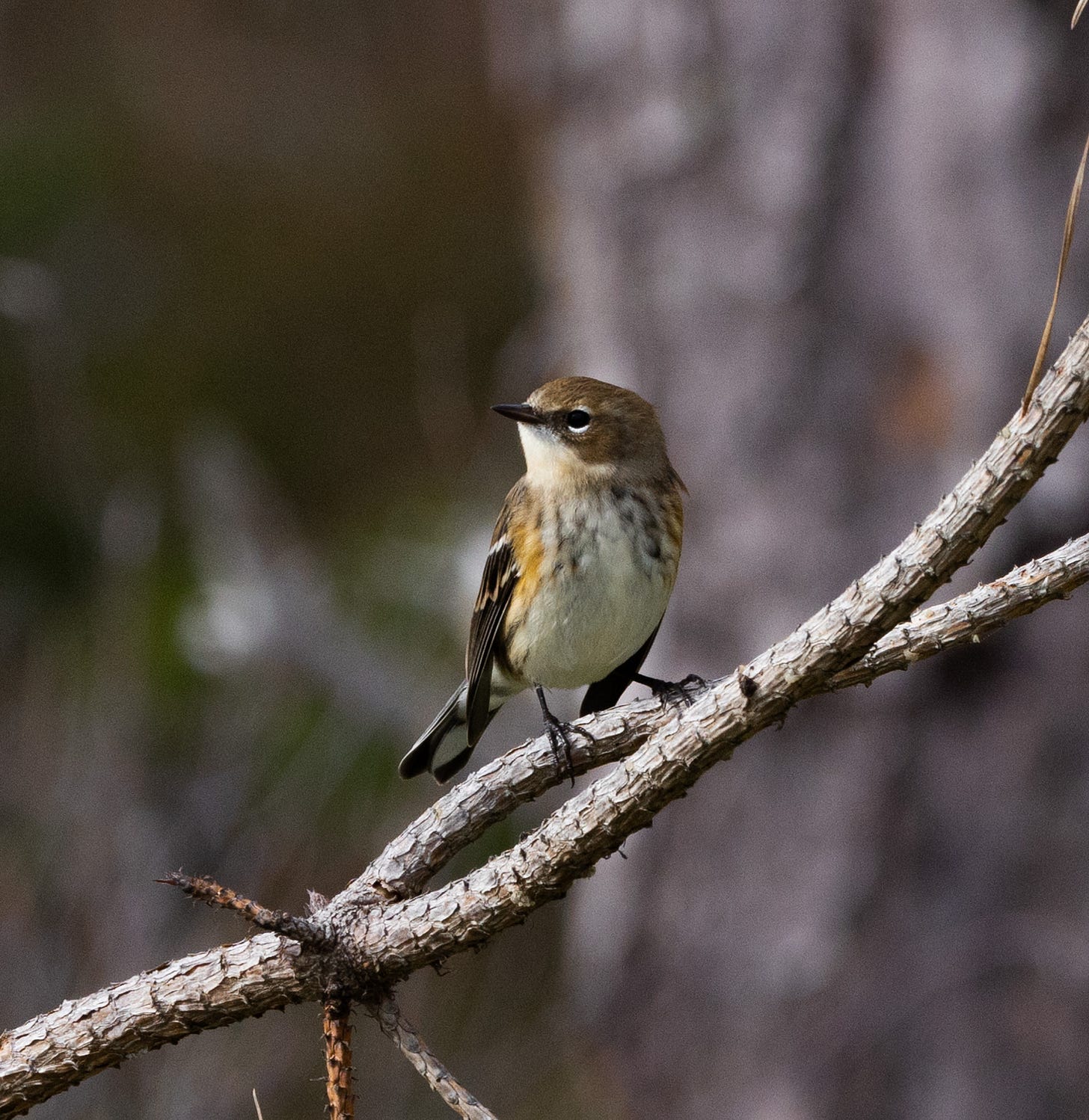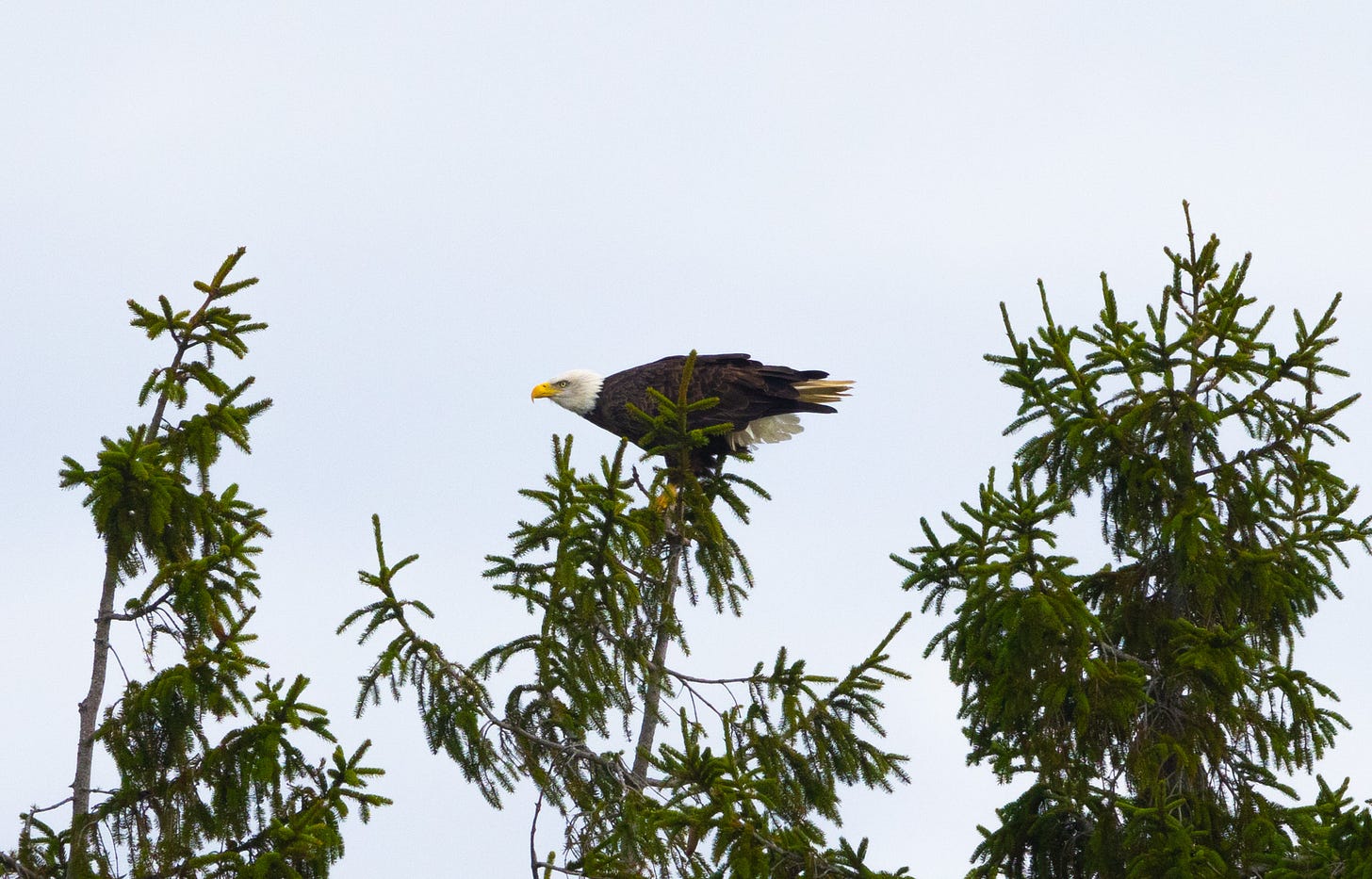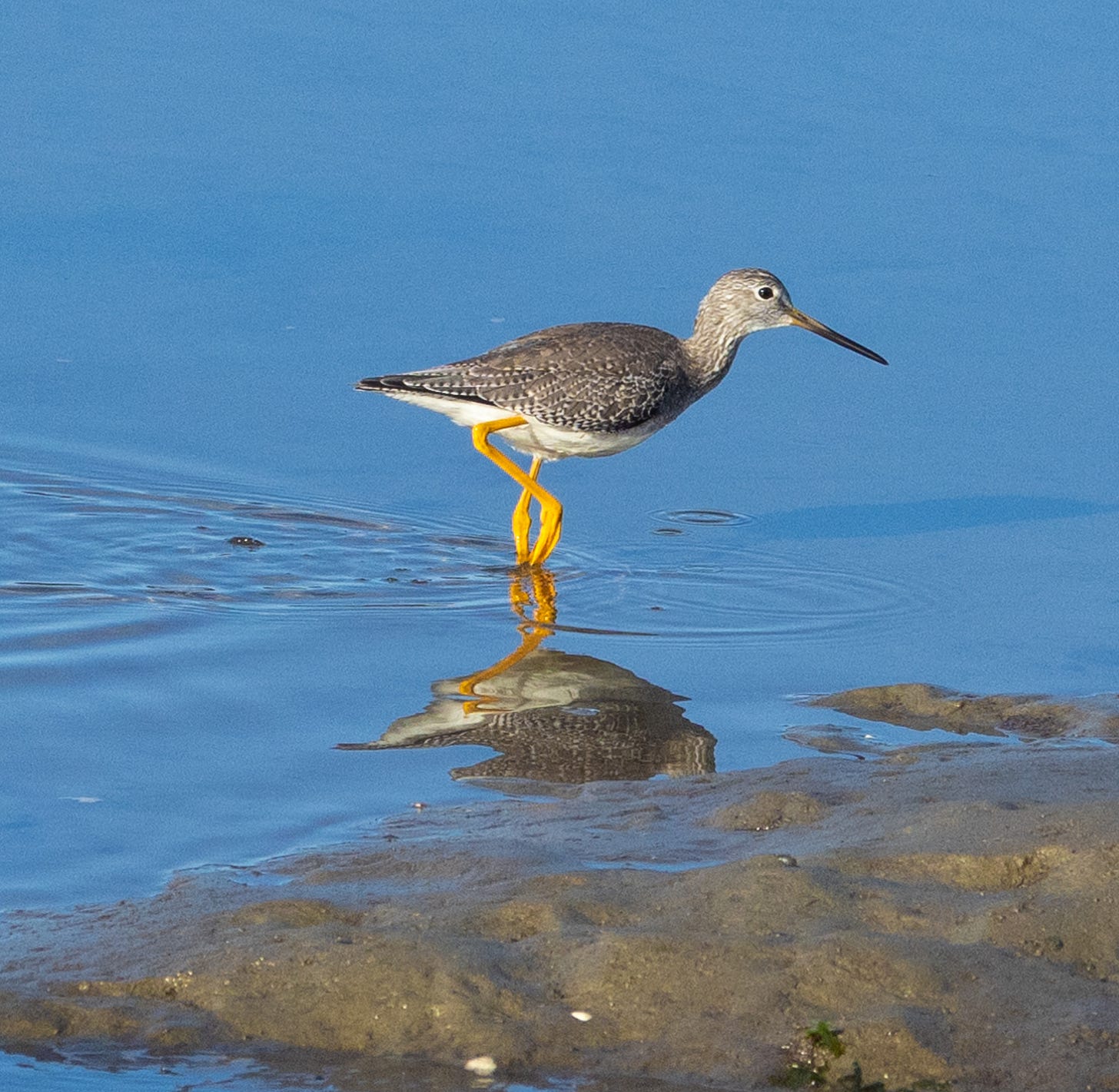1. Let’s start with B6. This is not a reference to Jet Blue’s IATA code. B6 is a 5 month-old Bar-tailed Godwit that set the world record this Fall for the longest non-stop migration – simply amazing!: A team of scientists from the U.S. Geological Survey, the Max Planck Institute, and the U.S. Fish and Wildlife Service conducted a study to track the migration of juvenile (hatch year) bar-tailed godwits from breeding sites near Nome, Alaska. This study was conducted to better understand how these birds navigate their first migrations from Alaska to wintering sites. This work is part of a larger effort to understand the locations and times of the year where godwits face the greatest threats. (via USGS)
2. How is it that godwits and sandpipers can make such long journeys? Researchers at theAdvanced Facility for Avian Research use wind tunnel technology to try to figure it out: It happens every fall: The days grow colder, the nights grow longer, the birds grow restless and then they take flight. In North America alone, billions of birds fly south for the winter, sometimes in enormous undulating flocks. It is one of nature’s great spectacles as well as an athletic feat: Some birds regularly migrate thousands of miles or stay aloft for days at a time. And yet, for a large-scale, annual event, migration remains surprisingly mysterious. Scientists are still seeking answers to basic questions about the costs and benefits of these avian journeys and what it takes to survive them. (via The New York Times)
By Hap Ellis, Yellow-rumped Warbler – Wells Reserve at Laudhom, Wells, ME
3. The Farallones – home to half a million seabirds and just west of San Francisco: Located some 27 miles west of San Francisco—on clear days, mainland beachcombers can see the islands’ jagged outlines far off in the distance—the Farallones are a great conservation success story. Here birds like murres and cormorants have bounced back from much human-caused devastation, including hunting, commercial egg harvesting, oil spills, offshore dumping of radioactive waste, and gillnet-fishing entanglements. But now these birds face a newer threat: warming oceans that make it increasingly hard for them to feed themselves and their chicks. (via Bay Nature)
4. Good piece in the Wall Street Journal – a rare bird often means a crowd of birders isn’t far behind: Meigan Rocco had no idea what she was in for last April when a bright blue lazuli bunting flew into her front yard on Long Island. The West Coast bird was last seen in New York state more than 20 years ago. “You about to be real popular,” warned a member of the Bird Identification Facebook group, after Rocco’s friend posted a picture of the finch-like songbird. (via The Wall Street Journal)
5. Very concerning - Avian flu is “decimating” the Bald Eagle population in Voyageurs National Park: Seventeen years after the Fish and Wildlife Service removed the bald eagle from the endangered species list, signaling the comeback of an iconic species, a new enemy is stalking our national bird. Not lead from duck-hunter bullets, not DDT from insecticides, not PCBs from industrial polluters. The enemy this time is avian influenza. (via The Washington Post)
By Hap Ellis, Bald Eagle – Mousam River estuary, Kennebunk, ME
6. Birds and hurricanes: a short piece from Mongabay featuring Andrew Farnsworth, visiting scientist at the Cornell Lab of Ornithology on the subject: Hurricane Milton, one of the strongest Atlantic hurricanes on record, is expected to hit the Gulf Coast of central Florida in the U.S. on Oct. 9. Hurricane Milton follows on the heels of Hurricane Helene, which devastated parts of the Southeast just two weeks earlier. Both storms coincide with the fall migration of birds in North America. Scientists say such storms can be deadly for birds, but many species have ways to cope with hurricanes; some even benefit. The U.S. National Hurricane Center radar recently observed a flock of birds traveling in the eye of the hurricane. Although we don’t know the species of birds traveling with Milton it is “fairly common” to find certain types of birds inside a hurricane, Andrew Farnsworth, visiting scientist at the Cornell Lab of Ornithology, told Mongabay by phone. (via Mongabay)
7. And then there is this: Last week, Hurricane Helene spun north into western North Carolina causing catastrophic damage, particularly in the Asheville area and surrounding counties. Entire homes and businesses were flooded, some floating away in a horrific wave of debris. In the midst of it all, some bird-watchers noticed something: People in some of the most heavily impacted areas were continuing to log sightings in the popular app eBird. As it happens, some of those areas—Buncombe and Henderson Counties in particular—have been birding hot spots for years. Less than a day after the storm passed, as many were still assessing the damage, birders were back to chronicling their finds. (via Wired)
8. Weather balloons and their impact on albatross and other marine wildlife: On a fall day in 2023, a juvenile Atlantic yellow-nosed albatross was lying listless in southeastern Brazil’s Santos Basin. Beach monitors found the young bird in the sand, weak and hypothermic. The cause of the albatross’s misery was evident: it was caught in a weather balloon. The balloon’s string, still attached to a radio transmitter, had gouged into the bird’s flesh—fracturing bones, killing tissues, and cutting off circulation to the bird’s feet. The albatross, too entangled to spread oil from its tail gland to its feathers for waterproofing, was soaked to the skin. Staff from the nonprofit Albatross Project took the desperate bird to the organization’s rehabilitation center nearby, where veterinarian Daphne Goldberg and her colleagues examined the albatross and decided euthanasia was the only option. Albatrosses need their feet to paddle and fly—it would not have survived as an amputee. “It was a tragedy. It was awful,” Goldberg recalls. Goldberg is the coauthor of a recent study about the impact weather-balloon debris is having on seabirds and marine animals. (via Hakai Magazine)
By Hap Ellis, Great Blue Heron – Mousam River estuary, Kennebunk, ME
9. 67 million years ago there appears to have been…birds of prey (not just Tyrannosaurus Rex): In western North America during the twilight of the dinosaur age, the unquestioned ruler was Tyrannosaurus rex, one of the largest terrestrial predators in Earth's history. But there were many other predators earning a living in various ways, including - as new fossils show - the oldest-known birds of prey. Researchers have discovered in Montana the remains of two newly identified Cretaceous Period avian species dating to about 67 million years ago that display anatomical traits resembling today's birds of prey. Specifically, they have a foot bone built in a manner that enabled them to capture, subdue and carry off prey just as hawks, owls and eagles do today. (via Reuters)
10. New study documents ecological consequences of extinction: : The Dodo, the famous flightless bird that inhabited the Indian Ocean island of Mauritius, is a case study in extinction caused by humans. The Dodo, finely adapted to its isolated ecosystem but unprepared for the arrival of people, was first encountered by Dutch sailors in 1598. Hunting, habitat destruction and the introduction of non-native species doomed it in under 80 years. It is hardly alone. New research has documented the extinction of 610 bird species over the past 130,000 years, coinciding with the global spread of our species Homo sapiens, an avian crisis that has only accelerated in recent years and decades. For instance, the Kauaʻi ʻōʻō, a Hawaiian songbird, was declared extinct just last year. (via Reuters)
11. Keeping extinction at bay - parasitic wasps to the rescue!: A tiny parasitic wasp has given a lifeline to one of the world’s rarest bird species by killing off an invasive insect that was threatening its survival. The Wilkins’ bunting lives on Nightingale Island, part of the Tristan da Cunha group; the world’s most remote inhabited archipelago. It eats the fruit of the Phylica arborea, the island’s only native tree. But around 2011, scientists began to notice signs of an unwelcome visitor. An invasive, sap-sucking scale insect had been, it seems, accidentally introduced on to the island by humans. These insects secrete honeydew, which encourages the growth of a sooty mould that weakens and eventually kills Phylica arborea. Their arrival threatened to destroy the forest, and the tiny bird population among with it. (via The Guardian)
12. Keeping a record – cataloguing bird strikes in Minneapolis: For one week this fall, Darci Gabriel spent the first hour of her day scanning the sidewalks of downtown Minneapolis’ Mill District for small brown lumps lying still among the fallen leaves. They’re bird carcasses, the result of window collisions as migratory birds travel through the Mississippi Flyway en route to their winter destinations. In the northwest side of the Bridgewater Lofts condominium, Gabriel finds one dainty gray bird with a lime-yellow throat, lying prone with its feet tucked up. She snaps a photo, then logs its location and her best guess at its species — Tennessee warbler — in a Survey123 mobile app that bird lovers use worldwide to track bird vs. building collisions and inform scientific research on bird mortality. Then she scoops the carcass into a Chinese takeout container to donate to the Wildlife Rehabilitation Center in Roseville. (via Star Tribune)
By Hap Ellis, Greater Yellowlegs – Mousam River estuary, Kennebunk, ME
13. Message to Houstonians: Embrace the Fall migration (and turn your lights off): Go outside and look up. It's fall migration season, and Houstonians are lucky enough to be in the route of the Central Flyway. Over a million birds have crossed Harris County each day this week, according to BirdCast, a collaboration with the EPA and several research groups. Fall migration runs through November, with peak activity through the end of this month. Houston Audubon is urging residents to turn off lights at night during this time. I've been slowly getting into birding. Not sure if I'm even considered a "novice birder" yet, but the enthusiasm is all there. Driving the news: Recently, I drove down to Anahuac for some bird-watching and a bit of nature times. It was a gem. (via Axios)
14. From Audubon, the decades-long work to restore America's Everglades continues with three new Army Corps of Engineers awards for critical restoration projects: Last week, the Army Corps of Engineers announced three new contract awards to build critical restoration projects that continue the decades-long work to restore America's Everglades. Audubon has worked to protect and restore the Everglades for more than 100 years and is a proud partner and supporter of this work. These three contract awards advance critical components of Everglades restoration and are partially funded through President Biden’s Bipartisan Infrastructure Law funding, which invested a historic $1.1 billion in the Everglades. These contract awards are a testament to the ongoing funding needs for Everglades restoration; as money is granted to this program, the Corps is demonstrating its ability to spend it on critical projects. (via Audubon)
15. Neonicotinoids are in the news again: Neonicotinoids are widely used insecticides in agriculture and horticulture. However, neonicotinoids usage is highly contentious because of their unintended harmful effects on various types of organisms. Researcher Elke Molenaar of the Wageningen University & Research (WUR) says, "There have been concerns about the negative impact of neonicotinoids on insect populations for some time, but the general consensus for many years was that birds suffered relatively little from their toxicity. The study is published in the journal Ecology Letters. (via Phys Org)
16. Finally, yesterday was the October Global Big Day – we hope that you got out and put your sightings on eBird: October Big Day—12 Oct 2024 - eBird
Bird Video of the Week
Video by Teton Raptor Center, “Raptor Rescue Network”.






